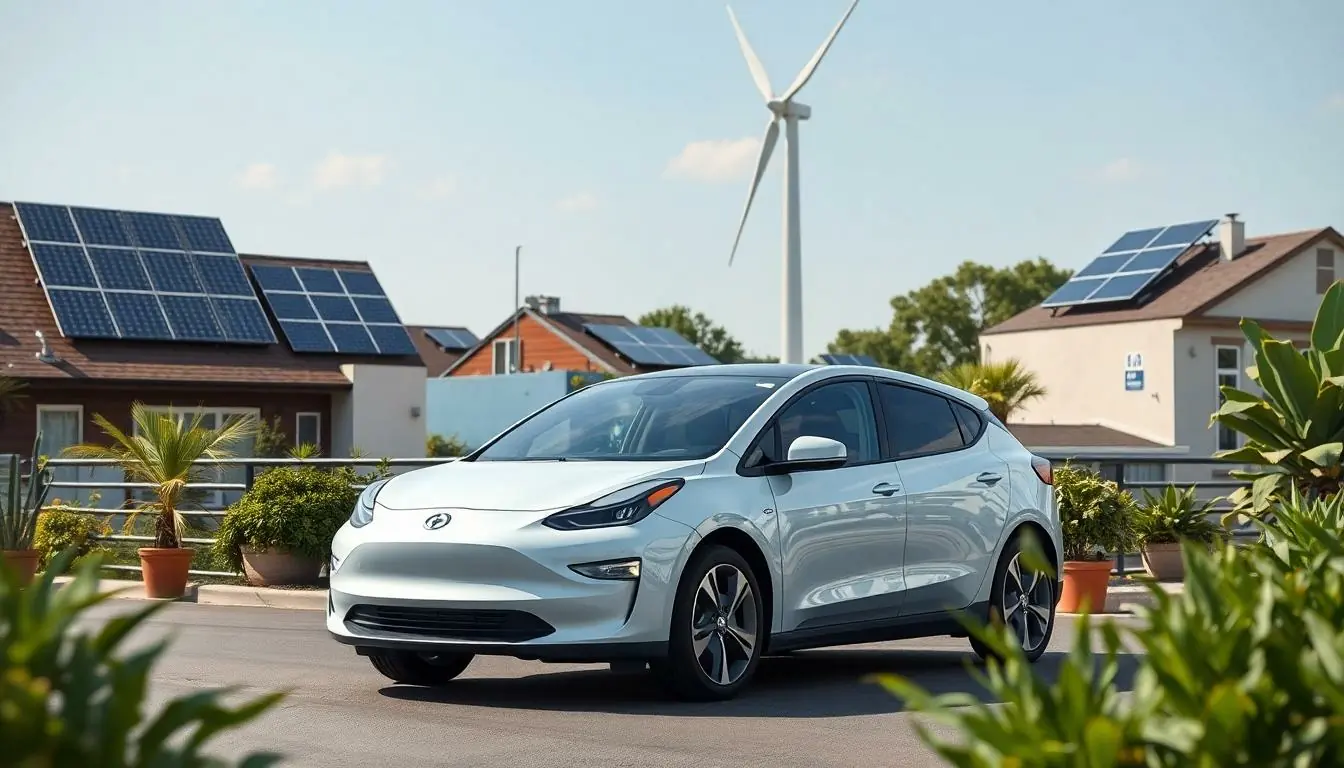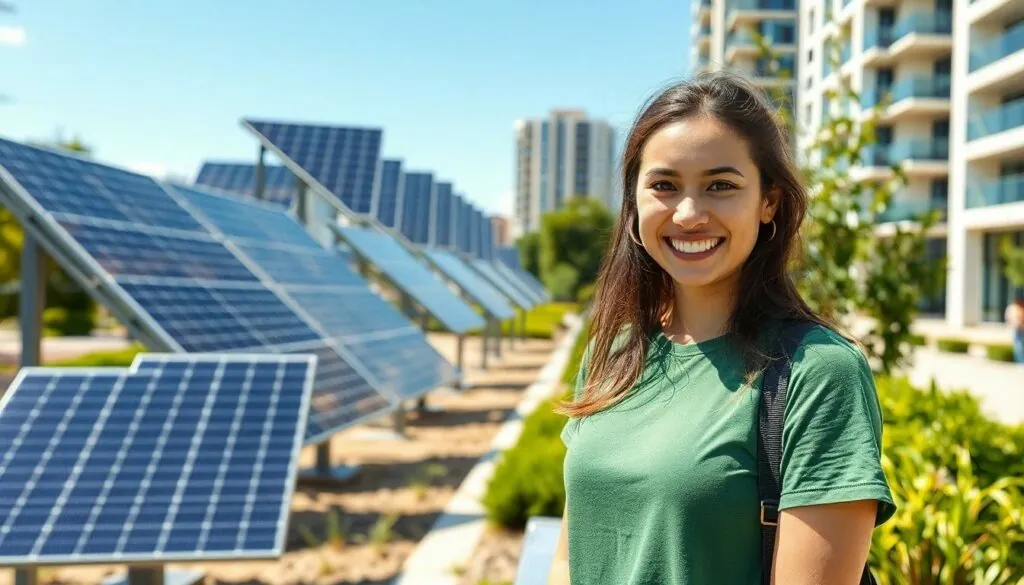Table of Contents
ToggleIn a world that’s increasingly feeling the heat—literally—green tech innovations are stepping up like a superhero in a spandex suit. These groundbreaking technologies are not just saving the planet; they’re making sustainability look cool. Whether it’s solar panels that double as art or electric cars that can practically drive themselves, green tech is turning eco-friendliness into a lifestyle choice rather than a chore.
Imagine a future where your morning coffee brews itself using energy from the sun, or your home runs on a battery that’s more reliable than your last romantic relationship. With each innovation, the green tech industry is proving that saving the planet can be both smart and stylish. So buckle up as we explore the latest and greatest in green tech innovations that are not only good for the Earth but might just make you the envy of your neighbors.
Overview of Green Tech Innovations
Green tech innovations represent a significant shift toward sustainable living. Artistic solar panels illustrate this trend, combining functionality with aesthetic appeal. Advanced electric cars enhance mobility while reducing carbon footprints. Innovations in energy-efficient appliances further contribute to eco-friendly households.
Smart home systems manage energy use efficiently, giving homeowners control over electricity consumption. Companies develop cutting-edge wind turbines capable of harnessing energy even in low-wind conditions. A growing number of organizations explore bioplastics, which provide alternatives to traditional plastics derived from fossil fuels.
In agriculture, vertical farming employs hydroponics and aeroponics to yield fresh produce in urban environments. Innovative battery technologies enable energy storage, ensuring renewable energy can be used when demand peaks. Many cities are implementing smart grids, optimizing energy distribution and reducing overall consumption.
Solar roofs emerge as a seamless integration of energy production into architecture, improving both utility and curb appeal. Human-centric design principles guide the development of green buildings, ensuring they are both environmentally sustainable and user-friendly. As technologies evolve, collaboration among businesses, governments, and consumers shapes the future of green tech.
Each of these innovations addresses distinct challenges, fostering a more sustainable world. Collectively, they illustrate the potential for advancements to create solutions that are practical, appealing, and pivotal in combating climate change. The transition to a greener future becomes not only achievable but also desirable through these pioneering technologies.
Impact on the Environment

Green tech innovations significantly reshape environmental sustainability. These technologies reduce reliance on fossil fuels and minimize waste, contributing to a healthier planet.
Reducing Carbon Footprint
Advanced electric cars produce fewer emissions compared to traditional vehicles, directly lowering urban air pollution. The use of artistic solar panels facilitates renewable energy adoption, leading to decreased reliance on non-renewable sources. Wind turbines generate clean energy at scale, providing electricity without harmful emissions. Businesses adopting energy-efficient appliances also see substantial reductions in their carbon footprint, promoting environmental responsibility.
Promoting Sustainable Practices
Innovative battery technologies enable energy storage, allowing for better management of renewable resources. Facilities incorporating smart grids improve energy distribution, reducing waste and enhancing efficiency. Vertical farming techniques conserve land and water, revolutionizing food production in cities. Sustainable materials, such as bioplastics, challenge conventional practices, encouraging industries to explore eco-friendly alternatives. These practices inspire communities to embrace healthier lifestyles and foster a culture of sustainability.
Emerging Technologies in Green Tech
Emerging technologies in green tech are pivotal for a sustainable future. Innovations in renewable energy and energy efficiency are leading the charge.
Renewable Energy Sources
Solar energy continues to dominate renewable energy advancements, with rooftop installations rising significantly, making clean energy accessible for homeowners. Wind energy is also gaining traction; modern turbines can now harness power even at low wind speeds, increasing energy production efficiency. Additionally, emerging tidal and geothermal energy technologies are diversifying the energy mix, ensuring greater energy security. Bioenergy is another vital source, utilizing organic materials to create sustainable fuels, contributing to reduced carbon emissions. These developments showcase the shift towards increasingly efficient renewable options that meet growing energy demands.
Energy Efficiency Solutions
Smart appliances are revolutionizing home energy use; devices integrate seamlessly with household systems to optimize consumption. LED lighting represents another leap forward, consuming up to 75% less energy than traditional bulbs while lasting significantly longer. Advanced building materials are crucial as they improve insulation and reduce heating and cooling needs. Mechanisms for energy monitoring allow businesses and homeowners to track real-time energy use, fostering informed decisions. Innovative heating and cooling technologies also provide more efficient options, minimizing energy waste and enhancing comfort. Collectively, these solutions exemplify the commitment to reducing energy consumption and cutting costs.
Challenges Facing Green Tech Innovations
Green tech innovations face several significant challenges that may hinder their widespread adoption. Economic barriers and regulatory policies often create obstacles for developers and consumers alike.
Economic Barriers
High upfront costs remain a primary economic barrier for many green tech innovations. Technologies such as solar panels and electric vehicles require substantial initial investments, making them less accessible for average consumers. Financial incentives like tax credits and rebates exist but don’t always offset the expenses associated with adopting these technologies. Additionally, the longer payback periods discourage some businesses from transitioning to energy-efficient solutions. Industry players must address financing options to encourage broader adoption. Grants and low-interest loans could help alleviate these economic challenges.
Regulatory and Policy Issues
Regulatory hurdles pose another challenge to green tech innovations. Complex compliance standards can delay project implementations and increase costs. Policies that favor traditional energy sources may undermine efforts to promote renewable alternatives. Vague regulations sometimes create uncertainty for businesses looking to invest in sustainable technologies. Policymakers should streamline the regulatory process to foster innovation and adoption. Additionally, strong support for green policies can help establish a level playing field for emerging technologies. These actions could enhance the growth potential of green initiatives in the market.
Future Trends in Green Tech
Emerging technologies in green tech significantly shape a sustainable future, with renewable energy and energy efficiency innovations leading the movement. Solar energy remains a primary focus, as rooftop installations continue to increase, making clean energy accessible for more homeowners. Wind energy gains momentum too, with modern turbines capable of harnessing power at low wind speeds, expanding its viability. Tidal and geothermal energy diversify the energy mix, while bioenergy effectively utilizes organic materials to create sustainable fuels and reduce carbon emissions.
Energy efficiency solutions capture attention as well. Smart appliances revolutionize home energy use through optimization of consumption. LED lighting brings substantial savings, using up to 75% less energy compared to traditional bulbs. Building materials evolve to improve insulation, ultimately reducing heating and cooling demands. Real-time energy monitoring mechanisms allow users to track their consumption promptly, enabling informed decisions on energy use. Innovative heating and cooling technologies emerge to minimize waste while enhancing comfort. Collectively, these advancements demonstrate a commitment to cutting energy consumption and costs, supporting the transition to sustainability.
However, challenges persist that may hinder widespread adoption of green tech innovations. Economic barriers often emerge, presenting high upfront costs for technologies. Solar panels and electric vehicles remain less accessible for average consumers despite existing financial incentives that frequently do not cover initial expenses fully. Regulatory hurdles contribute to the challenges, with complex compliance standards and policies favoring traditional energy sources causing delays. Addressing these barriers through improved financing options and streamlined policies enhances the growth potential of green initiatives in the market.
Green tech innovations are reshaping the landscape of sustainability by merging functionality with style. As these technologies become more accessible and appealing, they pave the way for a future where eco-friendly choices are part of everyday life. The transition to renewable energy sources and energy-efficient solutions not only addresses environmental challenges but also enhances the quality of life.
While obstacles remain in terms of cost and regulatory frameworks, the potential for growth in green technology is immense. By embracing these advancements, individuals and businesses alike can contribute to a more sustainable world. The journey toward a greener future is not just necessary; it’s an exciting opportunity for innovation and responsibility.







